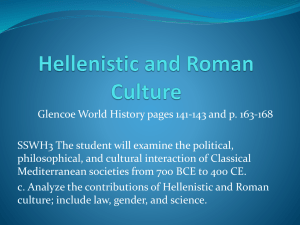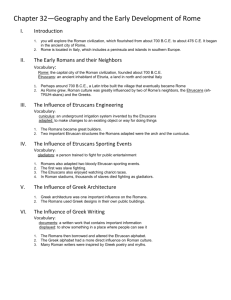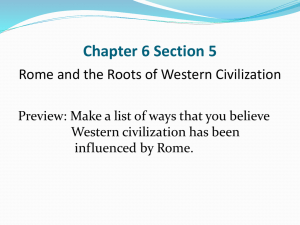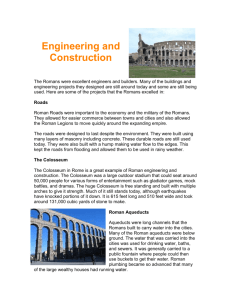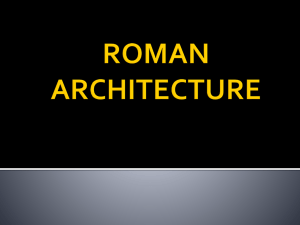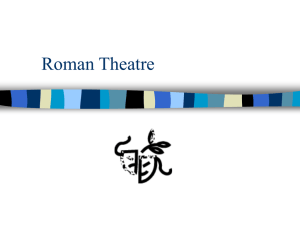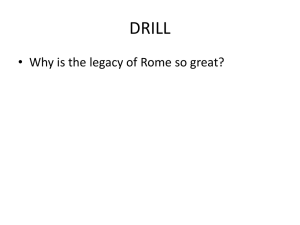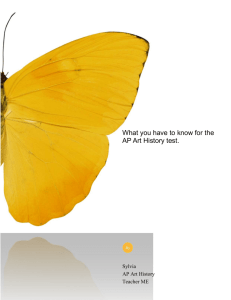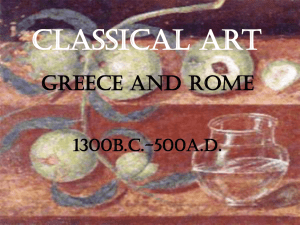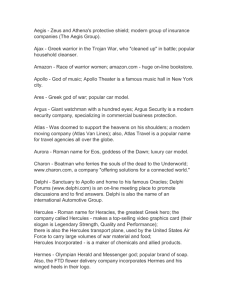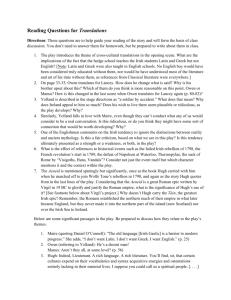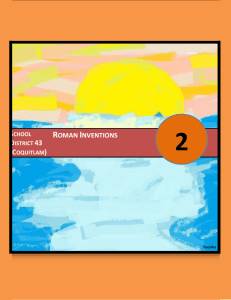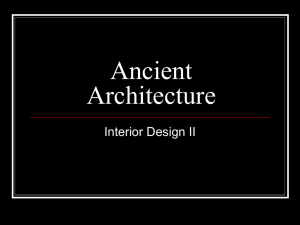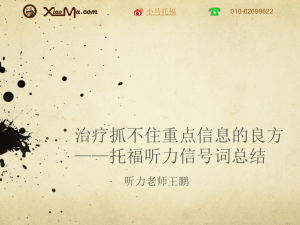Section 3 - MissPellegrini
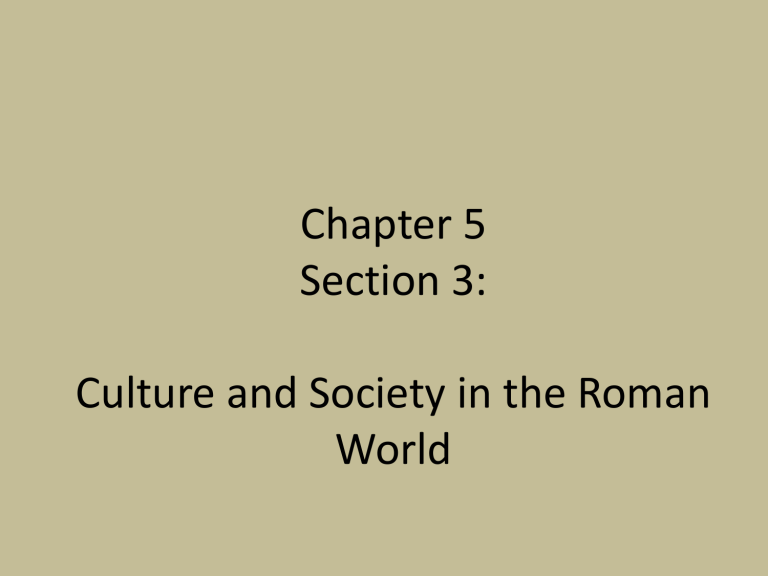
Chapter 5
Section 3:
Culture and Society in the Roman
World
Objectives:
• List important Roman poets, writers, and historians
• Examine Roman Art and Architecture
Roman Art and Architecture
• During the 2 nd and 3 rd centuries B.C., the
Romans adopted many features of the Greek style of art.
– Statues were placed in private homes, and reproductions of popular Greek statues were used.
• Roman style differed from Greek in that
Roman sculptors produced realistic statues that included even unpleasant physical details.
• Romans excelled in architecture, and used Greek styles as well.
– Romans also used forms based on curved lines: arch, vault, and dome.
– Used large amounts of concrete.
• Romans built a network of about 50,000 miles of roads.
• In Rome itself, almost a dozen aqueducts kept a population of one million supplied with water.
Roman Literature
• The high point of Latin literature was reached in the Age of Augustus.
• Most distinguished poet of the Augustan Age was Virgil
– From northern Italy near Mantua.
– Wrote his greatest work, the Aeneid in honor of
Rome.
• Story of Aeneas, the ideal Roman with virtues of duty, piety, and faithfulness.
• Another Augustan poet was Horace, a friend of Virgil.
• Wrote Satires, which points out the “follies and vices of his age”.
– Horace’s work often poked fun at the weakness of humans.
• The most famous work of the Latin age was done by a historian named Livy, who wrote
The History of Rome.
– In 142 books he traced Roman history. Only 35 have survived.
• Livy’s weakness as a historian: he was not concerned with factual accuracy.
Conclusion
Summarize the lesson:
• I learned that…
• For example…
• Therefore…
• However…
Objectives
• Examine the Role of the Family
• Identify the implications of slavery
• Evaluate the daily life of Roman Citizens
The Roman Family
• The Roman family was headed by the paterfamilias- the dominate male.
– Households also included wives, sons and their wives and children, and unmarried daughters.
• Children were raised at home, and upper class children were expected to read.
– Fathers made decisions for education: teach them himself, provide for a tutor, or send to school.
• Teachers were often Greek slaves.
– This was because Romans had to learn Greek as well as Latin to prosper in the empire.
• Roman boys learned reading ,writing, moral principles, family values, law, and physical training to prepare them to be soldiers.
– End of childhood was marked at age 16 with a special celebration of a new style of toga.
Attitudes towards Women
• Female weakness- necessary for male guardians
• Legal marriage age- 12, although 14 was more common. Male legal age- 14, but older was more common.
– Marriage was meant for life, but divorce was introduced in the third century B.C. and was fairly easy for both parties.
Changing Roles
• By 2 nd century B.C. the paterfamilias no longer had complete control.
• Upper class woman in the early Empire had more rights.
– Attend races, the theater, and events in the amphitheater. They were forced to sit in a separate female section
Slavery
• Slavery was very common in the ancient world, and often times they were treated poorly.
– In demand in a variety of fields, and often used in building roads and public buildings.
– Some slaves revolted against their owners, causing them to live in fear.
• Most famous slave revolt occurred in 73 B.C., under the leadership of a gladiator named
Spartacus.
Daily Life in Rome
• Rome was overcrowded, congested, and dangerous.
• The very wealthy lived in comfortable villas while the poor lived in large family units in apartment blocks called insulae.
– The insuale were poorly built and often collapsed.
Fire was very common.
– Most Romans spent much of their time outdoors in the streets.
Public Programs
• There were a great deal of public buildings and programs.
– Examples: temples, markets, government buildings and amphitheaters.
• Emperors (beginning with Augustus) provided food for the poor.
• Entertainment: Circus Maximus, Dramatic
Performances, and Gladiator fights.
Conclusion
• What did you learn in section 3?
Class Work/Homework
• 5-3 Worksheet
• Page 168 1,2,4,5, and 6



